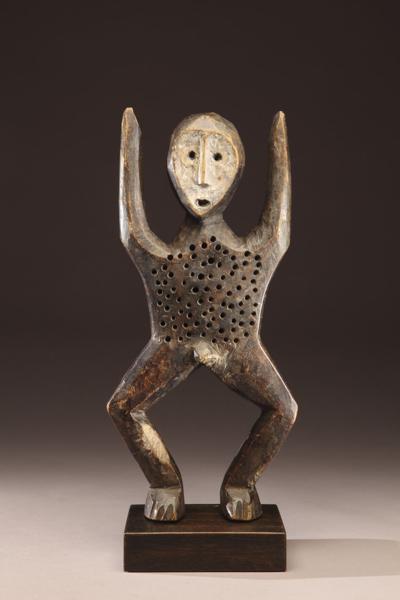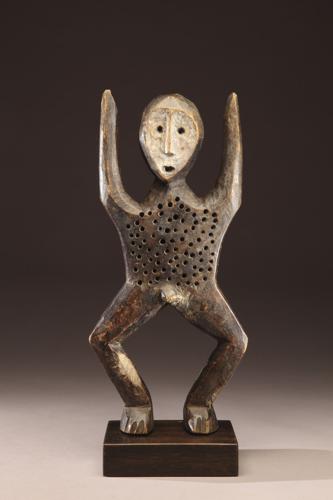In this series, Lagniappe presents a different work each week from the collection of the New Orleans Museum of Art, with commentary from a curator.
This figure may look as if it's signaling a touchdown at the Superdome, but its purpose is both humorous and instructive. Created by an artist or initiate of the Bwami Society in the Democratic Republic of the Congo, this figure would be used in a dynamic storytelling performance to critique laziness or sexual promiscuity.
The prominent holes bored into the torso symbolize the bite marks of army ants, which are known for their ability to quickly eat through anything in their path. A group of army ants is called katanda ke ibazi, or a “mat of red ants,” and this object represents a figure, depicted as a human-shaped sleeping mat, who was too lazy to move out of the ants’ way or someone who was caught off guard in someone else’s bed.
Bwami is historically responsible for guiding the ethical and moral development of Lega people. Although seemingly simple in form, Bwami visual arts are complex, and any single object can be used to teach and learn a multitude of lessons, accumulating layers of meaning and beauty over time.
Due to its secretive and didactic nature, the Belgian colonial government banned Bwami in the 1930s, but the practice continued, with artists creating less overtly recognizable didactic arts to undermine European authority. “Mr. Mat,” as “katanda” literally means, can be seen as an instructional tool, a cheeky warning and a symbol of resistance.
—Amanda M. Maples, Françoise Billion Richardson Curator of African Art


